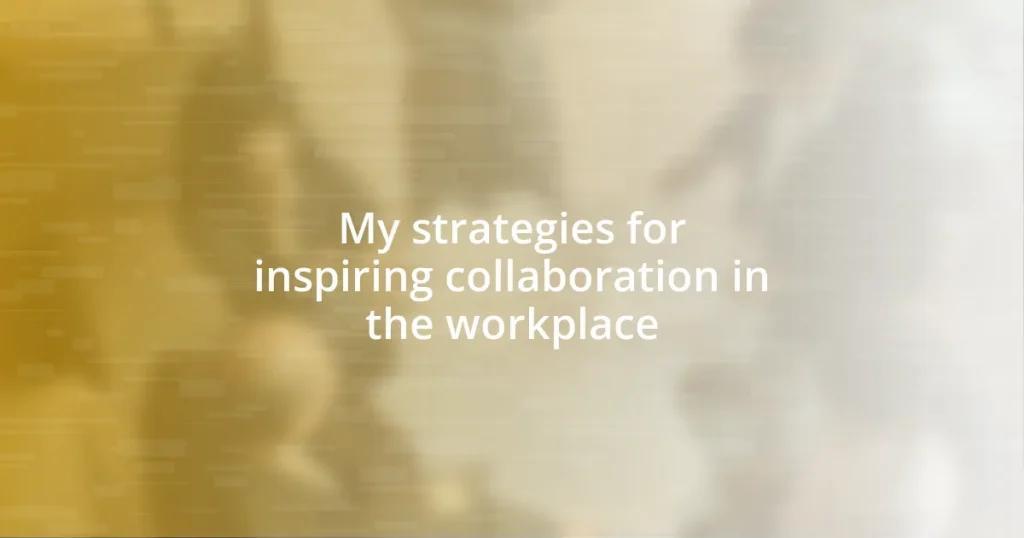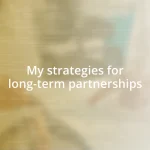Key takeaways:
- Collaboration enhances creativity and innovation by bringing together diverse perspectives, strengthening problem-solving capabilities.
- Communication barriers, lack of trust, and differing priorities can obstruct effective teamwork and must be addressed for successful collaboration.
- Implementing regular check-ins and utilizing collaborative tools fosters open dialogue, builds trust, and aligns team objectives.
- Measuring collaboration success through feedback and KPIs helps identify strengths and areas for improvement, reinforcing the team’s collaborative efforts.
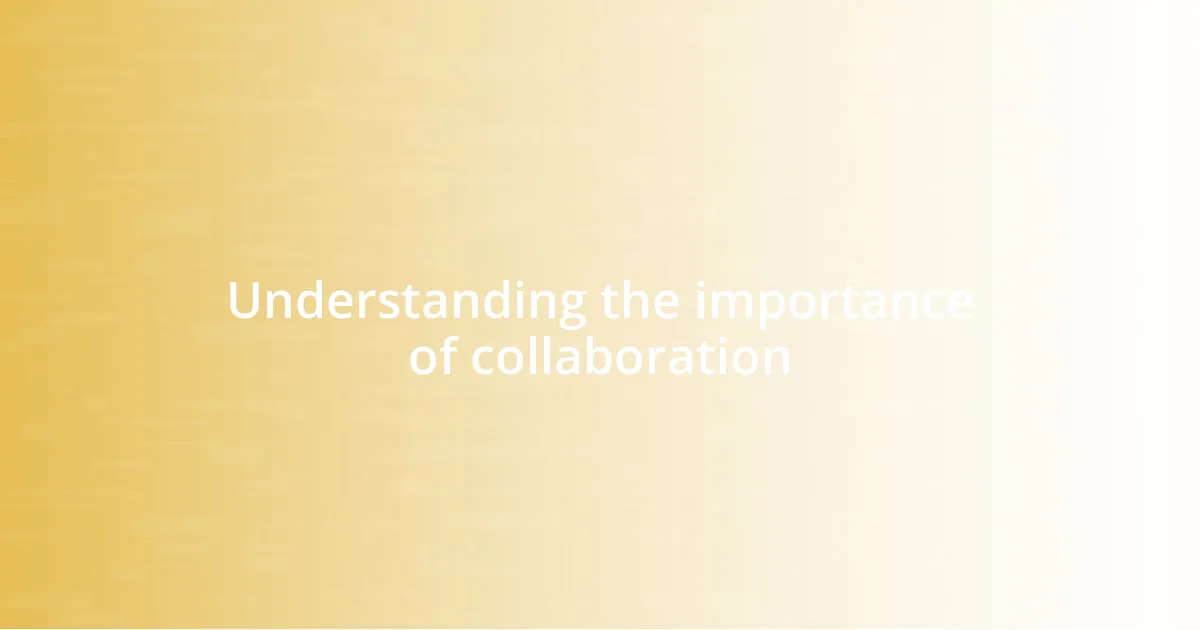
Understanding the importance of collaboration
Collaboration isn’t just a buzzword; it’s the lifeblood of a successful workplace. I remember a project where my team faced a tight deadline. Each member brought different skills to the table, and by sharing ideas and perspectives, we not only met the deadline but also exceeded expectations. It was a moment that reminded me of how diverse thoughts and experiences can create a richer outcome.
Have you ever felt stuck on a project? I know I have. It’s often when I reach out to a colleague that I find the missing piece. Collaboration fosters an environment where we can bounce ideas off each other, transforming individual challenges into shared victories. When teams unite, they harness varied strengths that lead to innovation and creativity, often delivering results that one person working alone simply couldn’t achieve.
Moreover, the emotional aspect of collaboration shouldn’t be overlooked. When we engage in open dialogue, we build trust and camaraderie. I once saw two coworkers who often clashed learn to appreciate each other’s viewpoints. Their growing respect not only improved their dynamic but also enhanced the whole team’s productivity. Isn’t it amazing how connection can fuel motivation and enable us to achieve more together?
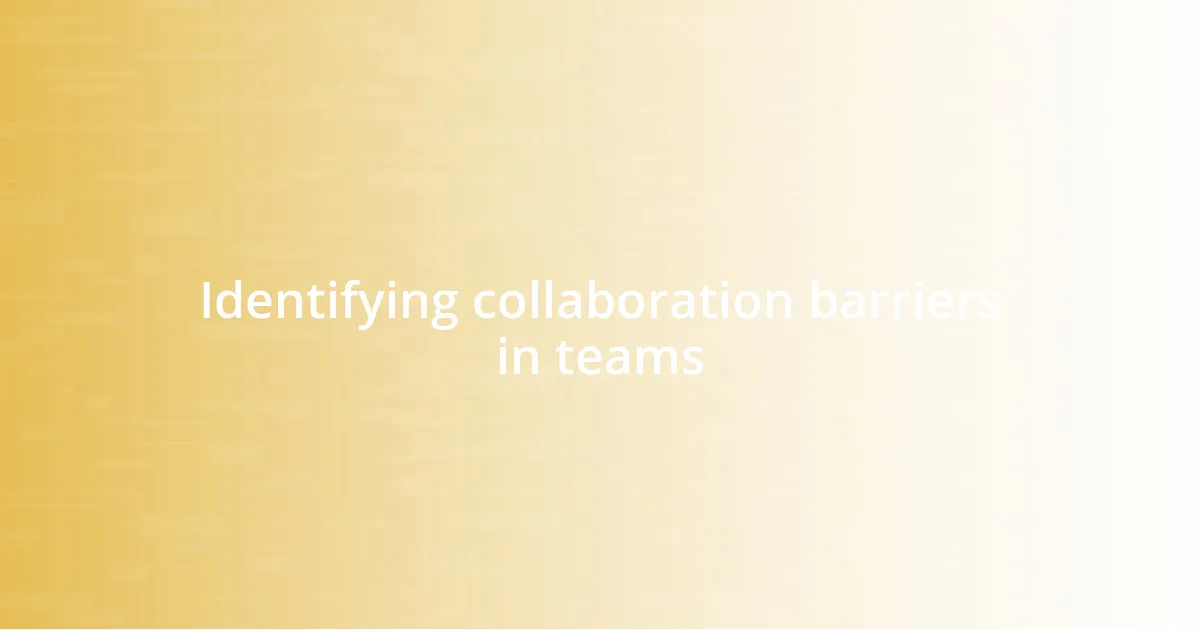
Identifying collaboration barriers in teams
Identifying collaboration barriers in teams can be quite revealing. From my experience, one of the most common obstacles I’ve come across is communication breakdown. There was a time when my team was working on a complex deliverable, but we faced multiple misunderstandings because assumptions were made instead of us seeking clarity. It was enlightening to realize how just a few open conversations could have cleared up confusion and saved us valuable time.
Another significant barrier I often encounter is the lack of trust among team members. I recall a situation where two talented individuals were hesitant to share their thoughts freely due to past conflicts. This reluctance not only stifled innovative ideas but also led to feelings of resentment. Building trust took time, but once they began to share openly, the transformation was incredible. It’s truly amazing to witness how open lines of communication foster a sense of safety, allowing everyone to contribute without fear of judgement.
Lastly, I’ve observed that differing priorities can obstruct collaboration. In one project, team members were engaged in their individual tasks but lost sight of the collective goal. This disconnect created frustration, as some were moving forward while others were lagging behind. As a team, we took a step back to align our objectives, and once we did, the progress became evident. I believe it’s essential to regularly check in on our shared vision, ensuring that everyone is on the same page.
| Barrier Type | Description |
|---|---|
| Communication Breakdown | Misunderstandings arise when team members fail to seek clarity. |
| Lack of Trust | Conflicts may prevent individuals from sharing ideas openly. |
| Differing Priorities | Team members may focus on individual tasks, losing sight of team goals. |
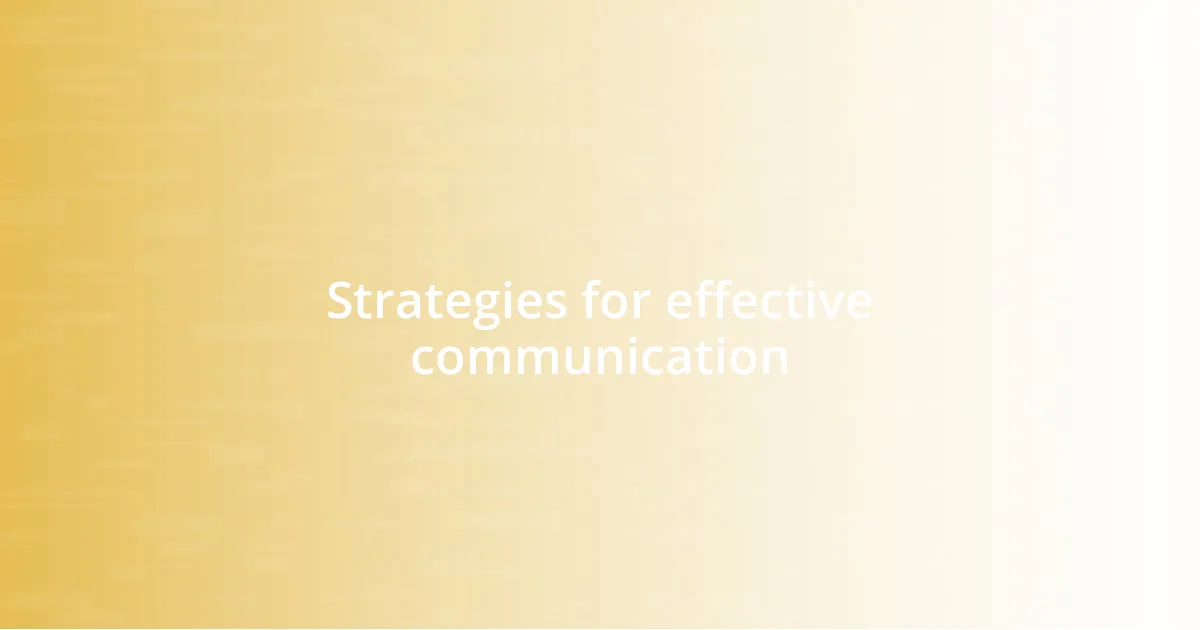
Strategies for effective communication
Effective communication is a cornerstone for inspiring collaboration. I can’t stress enough how vital it is to encourage open dialogue. In my previous role, I found that regular check-ins were a game-changer. By simply asking team members about their progress and challenges, we opened channels for feedback and support. It became a safe space where everyone felt valued, and as a result, our projects thrived.
- Utilize Technology: Tools like Slack or Microsoft Teams can enhance real-time communication.
- Encourage Active Listening: It’s essential to create an environment where everyone feels heard.
- Be Transparent: Share updates and changes frequently to minimize confusion and build trust.
I’ve seen firsthand how these strategies can transform the dynamics within a team. When I implemented a shared digital board for brainstorming, our meetings became more streamlined. Each team member could contribute ideas asynchronously, allowing for richer discussions during our face-to-face encounters. Embracing this collaborative mindset not only sparked creativity but also brought a refreshing energy to the workday.
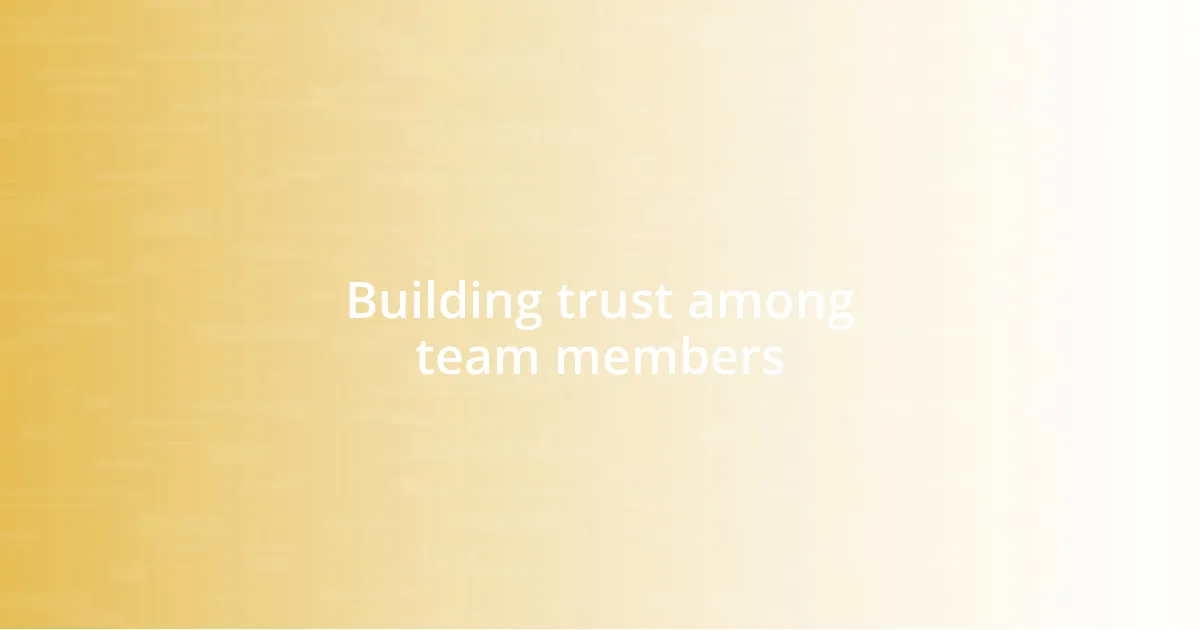
Building trust among team members
Building trust among team members is crucial for a harmonious and productive workplace. I remember leading a project where trust was a major hurdle. Some of my team members harbored doubts about each other’s capabilities, influenced by prior experiences. I initiated a team-building workshop that encouraged vulnerability and sharing personal strengths. Watching their apprehensions melt away as they discovered common ground was rewarding. Isn’t it fulfilling to witness colleagues shift from doubt to collaboration?
Trust isn’t built overnight; it’s a gradual process that thrives on consistent interactions. I found that sharing failures as openly as successes fosters deeper bonds. In one team meeting, I vulnerably shared a project I had nearly botched, and to my surprise, others followed suit. This exchange not only lightened the atmosphere but also created an environment where everyone felt empowered to take risks and voice their opinions. Have you ever experienced that liberating feeling when you realize you’re not alone in your struggles?
Being available for informal check-ins can also reinforce trust. I routinely took coffee breaks with team members; these moments often led to candid conversations that revealed underlying concerns and aspirations. During one chat, a colleague opened up about their struggles with a particular task. Together, we brainstormed solutions, and it struck me how such simple interactions can transform team dynamics. Isn’t it amazing what a little bit of personal connection can do for teamwork?
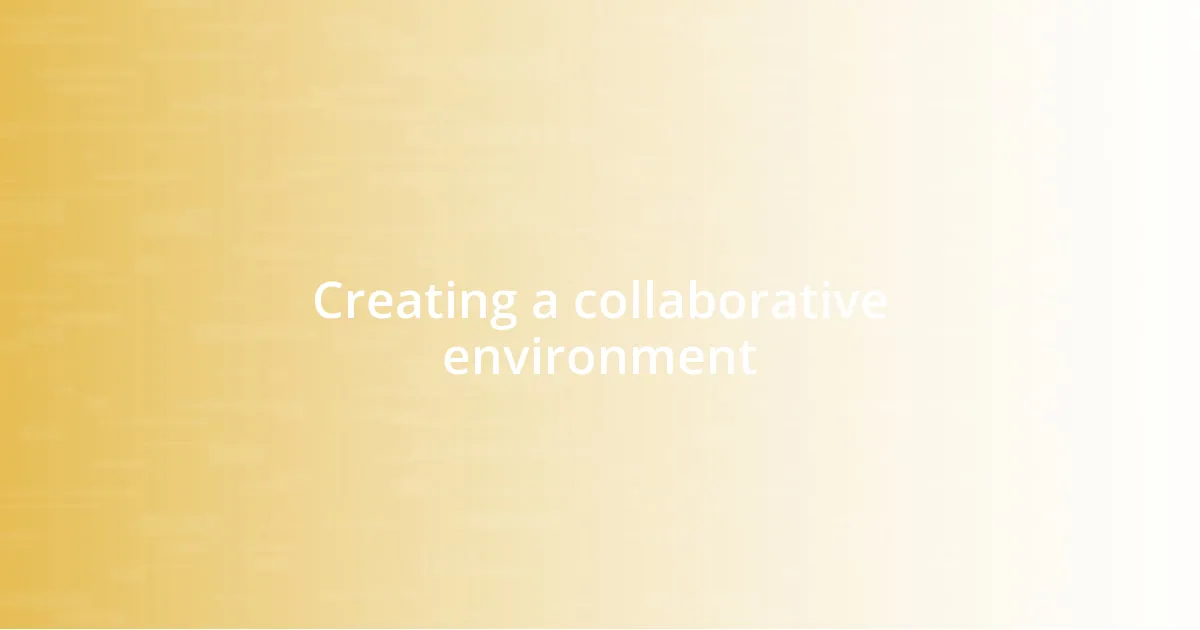
Creating a collaborative environment
Creating a collaborative environment starts with fostering inclusivity. In my experience, hosting informal gatherings, like team lunches or fun brainstorming sessions, has a way of breaking down barriers. I recall a time when sharing a meal sparked conversations that led to innovative solutions we hadn’t considered before. Have you ever noticed how relaxing a casual setting can allow ideas to flow more freely?
It’s also about ensuring that everyone feels their contributions matter. I remember a project where I set aside the first few minutes of our meetings to celebrate small wins. It wasn’t extravagant—just a few words of recognition for individual achievements. This simple act shifted our mindset from competition to collaboration. Can you think of a time when a little acknowledgment made a big difference in your workplace?
Furthermore, creating designated collaboration zones can energize teamwork. In one office I worked in, we repurposed a corner of our space with comfortable seating and whiteboards. This area became a vibrant hub for spontaneous discussions and creative brainstorming. Watching people bounce ideas off each other in such a dynamic environment was truly exciting. Doesn’t it make you wonder how a change of scenery can ignite inspiration?
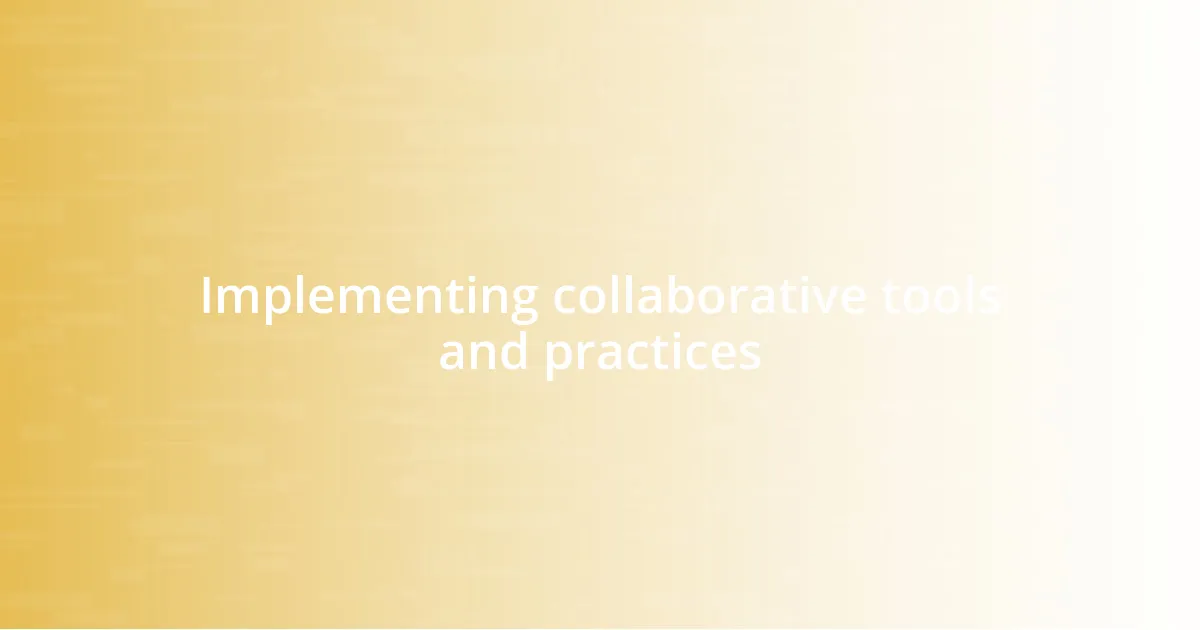
Implementing collaborative tools and practices
I’ve found that introducing collaborative tools can significantly streamline teamwork. For instance, during a recent project, we integrated a shared digital workspace that allowed everyone to contribute and track progress in real-time. The moment I noticed our team start to communicate through comments and feedback directly on our project board, it struck me how much more effective we could be. Have you ever felt the thrill of seeing ideas come together seamlessly?
Equipping teams with the right tools is important, but choosing the wrong platform can be counterproductive. I remember when we switched from a basic chat app to a more feature-rich messaging platform. Initially, it was overwhelming, and many of my colleagues were hesitant to embrace it. To ease their concerns, I arranged a fun demo session, where we explored the features together while sharing laughs. This experience reminded me that fostering familiarity can turn apprehension into enthusiasm. Isn’t it fascinating how support in learning helps others unlock their potential?
Regularly scheduled check-ins are essential, too. Implementing a standing meeting on every Friday gave us a chance to reflect and recalibrate our strategies. These sessions became a highlight of the week, filled with open dialogue and camaraderie. I often left those meetings inspired, as they reminded me of the vibrant ideas bubbling up when we collaborated intentionally. Don’t you think there’s something special about coming together to share our victories and challenges?
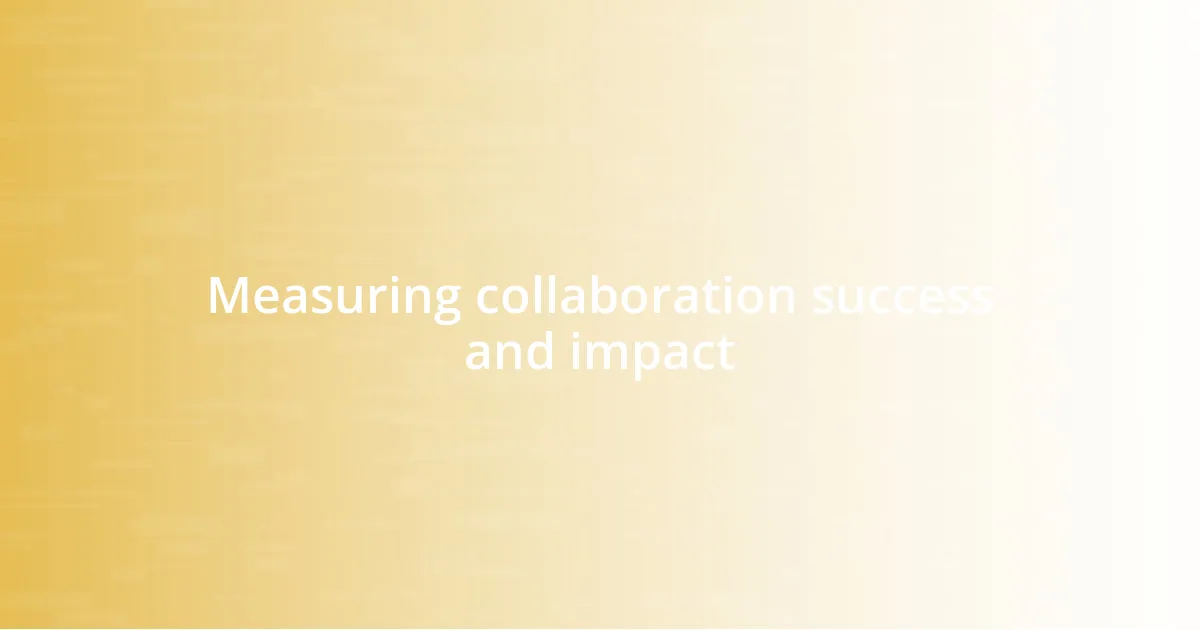
Measuring collaboration success and impact
Measuring the success and impact of collaboration can be a game-changer in understanding its effectiveness. In my own experience, we’ve implemented feedback surveys after major collaborative projects to gauge team members’ perceptions on clarity, engagement, and overall satisfaction. Reflecting on those results not only highlighted areas for improvement but also celebrated the moments when teamwork exceeded expectations. Have you ever realized how empowering it is to hear directly from your colleagues about what worked?
Another method I’ve embraced is tracking key performance indicators (KPIs) related to collaboration. For instance, we monitored response times in our collaborative tools and the number of shared ideas leading to actionable outcomes. I recall vividly when a project that initially seemed daunting transformed into a resounding success. The data revealed that collaboration led to a 30% increase in project completion speed. Isn’t it fascinating how numbers can tell a story of teamwork and shared accomplishment?
Finally, I advocate for open, honest discussions about collaboration’s impact during team meetings. I encouraged everyone to share not just successes but challenges encountered along the way. In one particularly memorable session, a colleague spoke candidly about a miscommunication that almost derailed our project, but their willingness to address it encouraged others to speak up too. That openness cultivated trust and fortified our collaborative spirit. Have you ever considered how vulnerability in discussions can strengthen your team’s connection?










